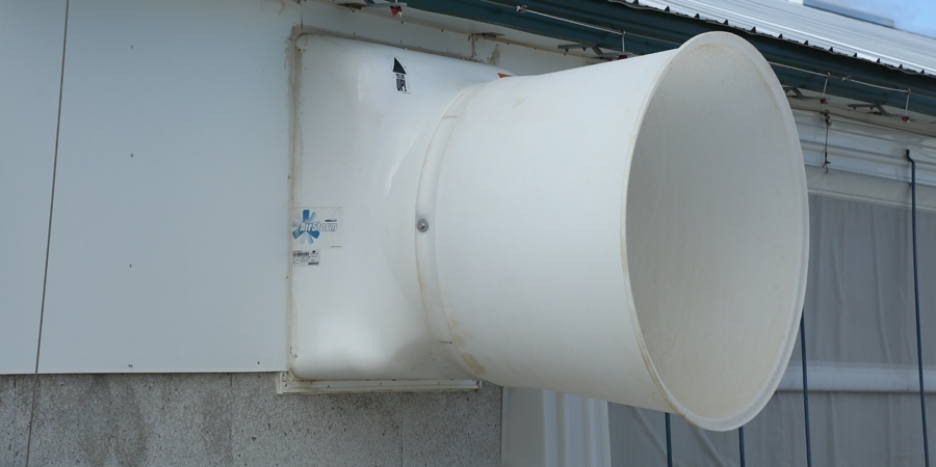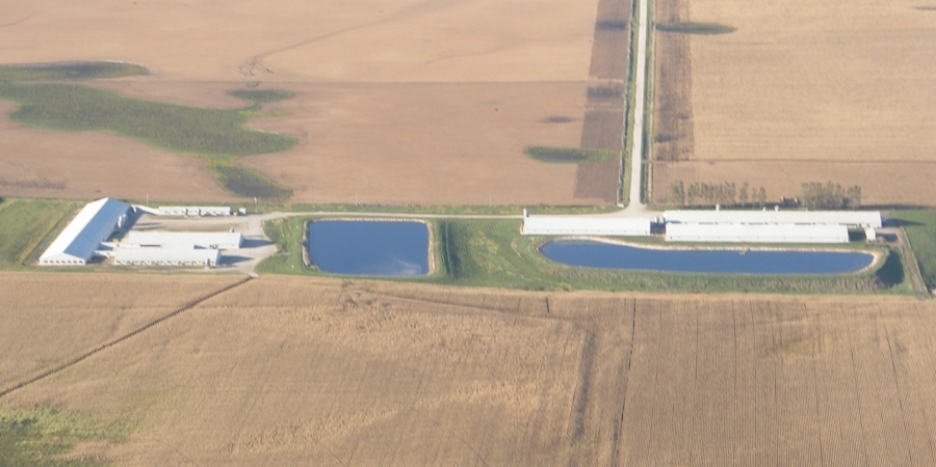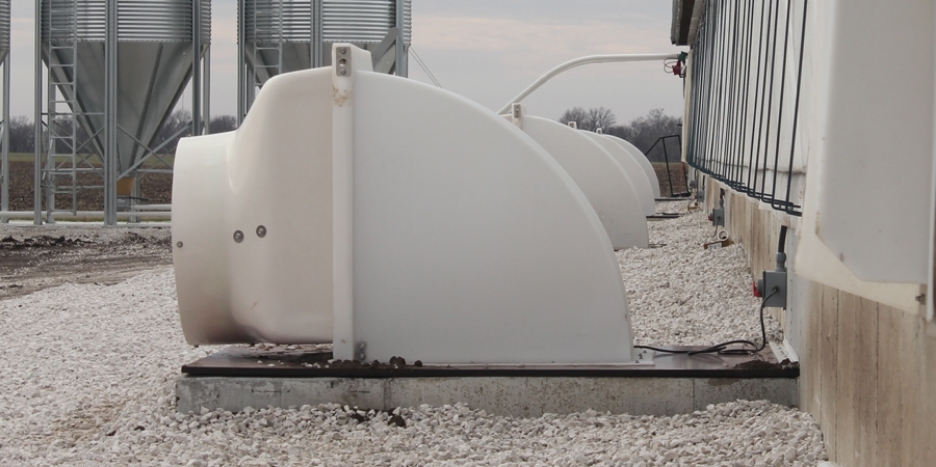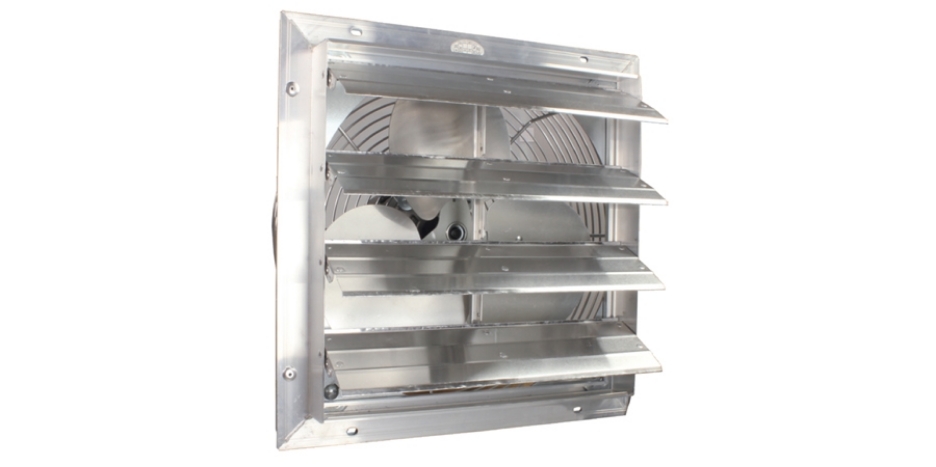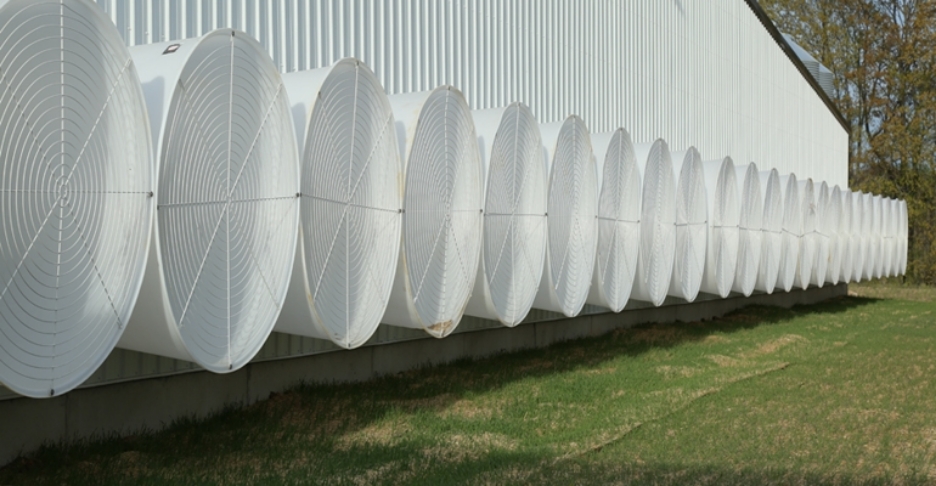Slat University is a series of articles providing useful information on manufacturing, handling and maintaining concrete slats.
Blog
Slat University is a series of articles providing useful information on manufacturing, handling and maintaining concrete slats.
Water: Most crucial component in a precast concrete mix.
Anybody who has ever poured concrete is familiar with the adage "the less water you use, the stronger the concrete will be."
Here's why.
 Excess water evaporates leaving behind large voids weakening the final product.
Excess water evaporates leaving behind large voids weakening the final product.
Water added to the dry ingredients begins a chemical reaction with the cement powder known as hydration, which bonds the aggregates together, creating the synthetic rock known as concrete. Any additional water added, beyond that needed for hydration, only creates larger spaces between the aggregates in the mix. These voids cause the concrete to be weaker and more porous.

Every additional inch of slump decreases the final strength by approximately 500 psi.
Concrete formulated with a minimal amount of water is known as dry-cast concrete. To put this is in more familiar terms, dry- cast concrete exhibits a slump of less than a 1/4-inch. Ready-mix concrete is typically formulated to have a four-inch slump. As a general rule, every additional inch of slump decreases strength by approximately 500 pounds per square inch. So for example, if a dry cast mix is designed to be 6000 psi, adding water to make it a four-inch slump could reduce the strength of the final product by as much as 2000 psi.
Also, a dry cast product is also denser with fewer voids. As the excess water evaporates from the concrete with a higher water-cement ratio, microscopic pores are left behind. These pores allow acids from hog waste and feed ingredients to migrate into the concrete, causing faster deterioration of the slat.
If less water makes the best concrete why would any slat manufacturer ever add extra water?
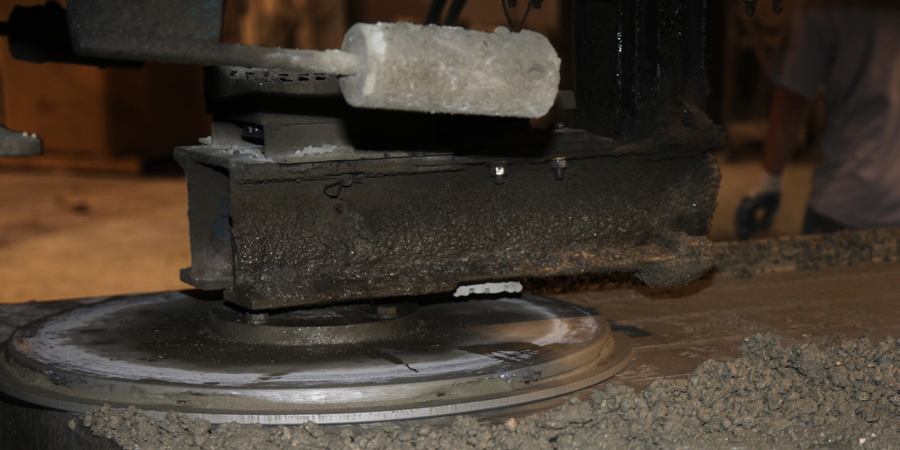
Powerful rotoscreeds trowel dry cast concrete.
Dry cast concrete is very difficult to handle without mechanized equipment. Many manufacturers lack the equipment and know-how needed to place and finish dry cast mixes properly. Water is added to the concrete mix so it flows into the molds and can be troweled. While this may lead to manufacturing slats with a smoother physical appearance, the finished product will not be as durable or long-lasting as a dry cast slat.
Also, some manufacturers may not have the technology to batch dry cast formulations consistently. To properly make dry cast concrete it is necessary to use state of the art batching equipment that measures the amount of moisture in the sand and aggregates and adjusts the amounts of these ingredients as well as the added water. These adjustments ensure that the final mix is always the same and doesn't vary during wet or dry weather.
Cherkizovo Group discusses factors influencing their choice of equipment for their most recent building project.
The following article contains excerpts from an interview with Brad Heron, Executive Manager of Pig Production for the Cherkizovo Group. Cherkizovo is one of Russia’s largest pork producers. Joining Brad for this interview was production manager, Alexander Busov. Ivan Svinarev from Donskoy State Agrarian University conducted the interview.
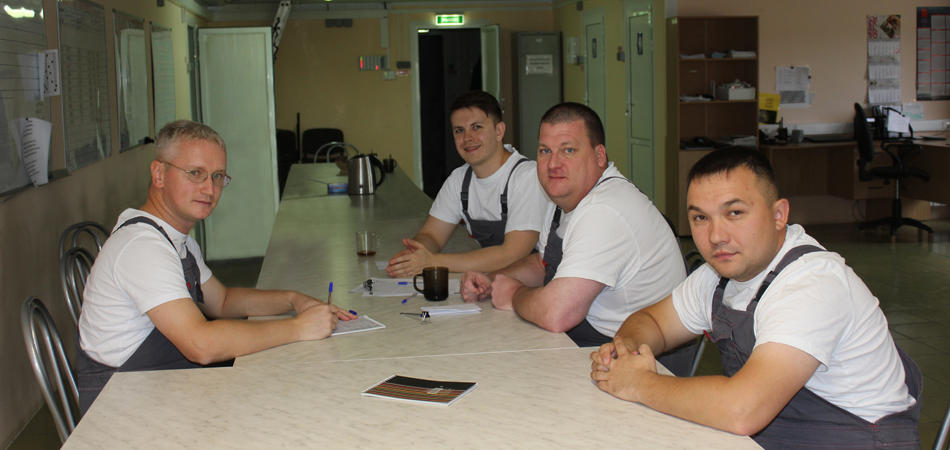
Ivan: Having experience in working with different building companies, which factors could you point out that influenced your choice of facility design?
Brad: Well, chimney ventilation was the most common type of system in Russia. Based on our experience we wanted to make changes and go with a more western type of tunnel ventilation. We felt that this design of ventilation would be more productive for us. We had some experience with Hog Slat in America. In addition, they had a good operation in Russia, had already invested in their supply chain and their equipment was readily available. As we began the operation and did the expansion for the sow barns and finishing sites, we felt it was an obvious choice.
Ivan: This cooperation can be divided into two big components: the equipment itself and production practice. Do I understand it right that the production practices in this project are Cherkizovo's ideas, not Hog Slat’s? Or is this a combination of both companies?
Brad: When I came here the guys had already started the relationship with Hog Slat. Our first order of business was to standardize all the operating procedures based on the best practices from throughout the world. In some cases, that information came from Spain and sometimes from North America.
We wanted to be in a position that within 3 to 5 years we could start to benchmark ourselves against the world. Our owners wanted to be the best, not only in Russia but also in the world. We felt like any new construction, especially Wean to Finish buildings, needed to be the tunnel ventilated.
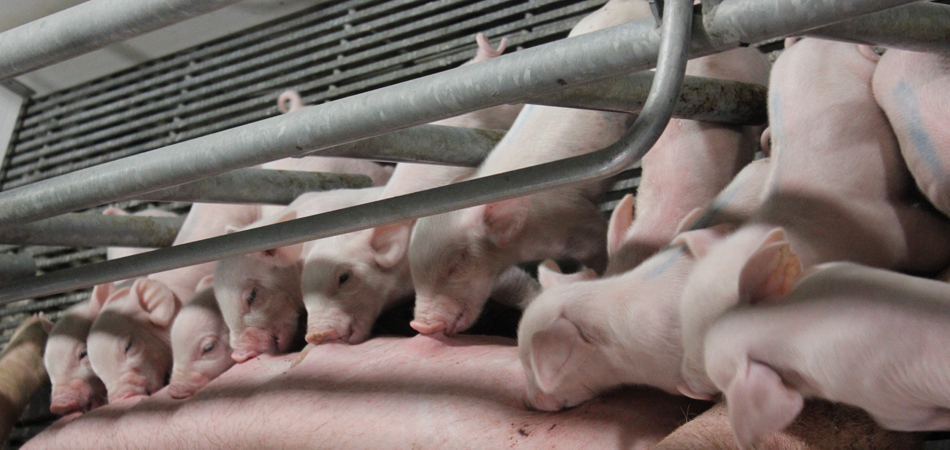
Some of our initial challenges began when we started to increase the productivity in the sow barns as the original buildings were only designed to handle 2800 pigs a week. We increased productivity and pretty soon we were weaning 3100 pigs with a goal of 3800 to 4200 pigs a week. These original models no longer fit.
What happens when you have a sow barn that outperforms the size of the nursery and finisher? You have to build more nurseries and finishers...or you can build W/F buildings and gain some flexibility.
We knew from a cost of production standpoint, W/ F unit under normal stocking was going to produce a cheaper pig going through this system. It’s also more biosecure than the standard production model of nurseries and finishers because you have one less movement.
Getting people to understand the advantages of W/F was a bit of a challenge. The traditional production model in Russia is separate sow barns, nurseries, and finishers, three-step movement.
Every week we wean around 45-50,000 pigs, which go to the nurseries and then we have to move them from the nurseries to the finishing buildings. Saving the labor used in moving pigs this extra step is one of the reasons W/F units are less expensive to operate. Also in the old system pigs finished in 168 days, in the W/F buildings they finish in 164 days. Same weight but when we move the animals, we lose the efficiency.
So today we have already built 16 W/F sites here, we have three, possibly a fourth one planned for the next year. We built a new sow barn that requires eight W/F buildings. So we constructed extra W/F sites to solve this problem. We have to go somewhere with these extra 1000 to 1400 pigs a week and so they are going to W/F units.
Ivan: In this farm, you use individual gestation stalls. What is your personal opinion as a specialist to pen gestation compared to individual stalls? Do you plan to have pen gestation in Russia?
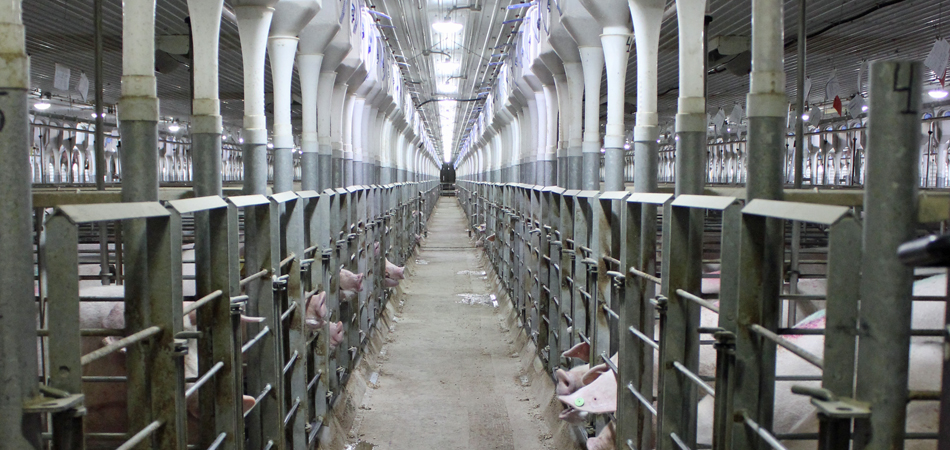
Brad: Obviously if we want to export to the EU in the future than we will consider that option. But if you get an honest answer from anybody, your animals are going to perform better in a sow barn with individual stalls, as the animals are easier to manage. We do have some pen-gestated farms, and those will typically have 2-3 % lower farrowing rate.
Ivan: For one of the key aspects in your choice of equipment you name the use of the tunnel ventilation system. The opponents of this system say that it was created for poultry and pigs don't have feathers and therefore feel discomfort. In Lipetsk region (western Russia), the experience of your company proves that there is no need for pigs to have feathers. So are you happy with the temperature range? And are there are any problems using the system during summer or winter period?
Brad: Tunnel ventilated farms with low ceilings are going to be better year around. In summer heat we can compare standard chimney ventilated barns with the tunnel ventilated W/F buildings. Lots of times when you build those big chimney style barns you are kind of replicating outdoor ventilation with uneven airflow and varying temperature distribution. But with powered tunnel systems, we control the airflow and temperature much better and can raise the animals more consistently.
Before we started using the tunnel ventilation we had the standard chimney system. Alexander is responsible for commercial part, and he can comment on this.
Alexander: In the tunnel barns we have comfortable conditions no matter what time of the year. With the same genetics and feed, we get better production figures from the tunnel ventilated farms. Also, the old style of buildings had 12m ceilings with steam heat...it costs much less to heat the tunnel buildings with their lower ceilings. We don’t see any minuses yet.
Ivan - What is the main difference between a similar project in Russia and the US?
Brad: Sow farms are similar, around six to eight thousand sows. There are a couple of things that are different when building in Russia. To provide protection from swine fever, we have to build a security post, disinfection barriers, and large fences around the buildings.
In the US you tend to see smaller finishing sites with enough land around them to spread the manure. But for us, because of the lack of utilities and roads along with additional fixed costs to protect against African swine fever – our finishing sites are much bigger. We'll put all eight of the finishing barns for this sow farm on one location instead of eight individual sites like in the US. However, once you are inside the building, everything looks the same.
Ivan: What do you think the key possibilities are for a further increase in productivity along decreases production costs in Russia?
Brad: This particular sow farm is producing the lowest cost wean pig around. For me, increases in production come when you allow the animals to maximize their genetic potential. For that to happen, you need good genetics, good health, sound production practices, and well-designed facilities especially the ventilation.
We have other sow farms that are the build on the old production style. The new farms always out produce them because they are better ventilated and easier to work in.
I believe that Russia can be the leader concerning KPIs if we can figure out how to get rid of African swine fever. Russia has everything that needs to be a leader in agriculture including an agriculture culture. In Russia, people understand where their food comes from. Russia has space, which means you don’t have the same density as in the US, so I believe we can keep our farms healthy.
Evaluating new technology should be based on three critical factors…does it fit, will we use the information, and will it make us more profitable?
By Fritz Richards, Sales Manager, Hog Slat Inc.
We just returned from the EuroTier show held in Hanover, Germany. Billed as the largest animal production trade fair in the world this year's theme was "Digital Animal Farming." Many of the equipment manufacturers highlighted sensor technology designed to measure everything from humidity, lighting, behavior, estrous, etc. and link the data to Artificial Intelligence systems.
In the middle of this overwhelming display of "smart farming" it pays to take a moment to consider the real value of all this technology. “Smart Farming” does not mean that you have every piece of high tech equipment on your farm that is available. “Smart Farming” is maximizing your profitability by utilizing the correct combination of technology and quality products.
Every production system is different, whether it's a single farm or a large integrated model spread over many locations.
First, each production system needs to evaluate new products with a critical eye to determine if it fits their system.

Let's take the example of group sow housing. For a farm with a stable workforce and low turnover, electronic sow feeding could be an excellent choice for loose housing. Forcing the same ESF equipment on a production system with higher employee turnover would not yield as good of results. It would be easier to train employees and maintain the equipment with a less intensive system using stanchions and drop feeding — less technology but better results.
The second criterion for evaluating new technology is will the production system utilize this new information.

Consider feeding sows for maximum performance in lactation. Installing a trigger activated SowMAX dispenser will increase productivity and reduce labor and wastage compared to hand feeding. Installing an electronically activated hopper will yield similar results and record the metered amount of feed to a central record keeping system. The evaluation must then be, is this additional information worth the higher cost and increased maintenance? How will this new information be used to make better management decisions?
The third and the absolutely most important evaluation for any new technology is it should LOWER COSTS AND IMPROVE PROFITS.
The cost of computerized ventilation controllers is easily recoupled through increased growth rates due to the improved environment, but adding additional features only increases cost with little chance for payback. Take the example of a recent project where the owner wanted to connect the ventilation control to his smartphone at a cost of $10,000. This additional expense would not have significantly improved pig performance and would have only put him in a weaker financial position.
Now don't get this wrong, we're not backward thinking Luddites opposed to all new technology, but we think for "smart farming” to be truly smart it has to pass the following criteria.
1) Does it fit the current production system and personnel?
2) Will the information indeed be used to make better management decisions?
3) And most importantly does it increase productivity AND PROFIT?
Some new “smart farming” technology only increases data overload and offers very little new information to make smarter decisions. Is it really necessary to individually monitor every animal on a 5,000-
Careful and thoughtful evaluation will ensure all new products and technology contribute to a farm’s overall profits.
Fritz Richards is the sales manager for Hog Slat Inc.’s swine business division. Fritz can be reached frichards@hogslat.com.
A new control system allows larger fans to be converted to variable speed with improved accuracy and reduced energy consumption.
Most fans used for minimum winter ventilation rates tend to be smaller diameter fans. It's necessary to use fans with a lower total cubic foot per minute output as the most common method of slowing the fan to reduce air volume is reducing the voltage going to the motor. It is generally advised not to operate voltage-regulated fans at speeds below 40-50% of their maximum revolutions per minute to prevent the motor from overheating and stalling.
Although smaller fans are effective in delivering the correct minimum rates they do not significantly contribute to the total cfm rate needed to cool the building during maximum ventilation or perform at the highest energy efficiency.
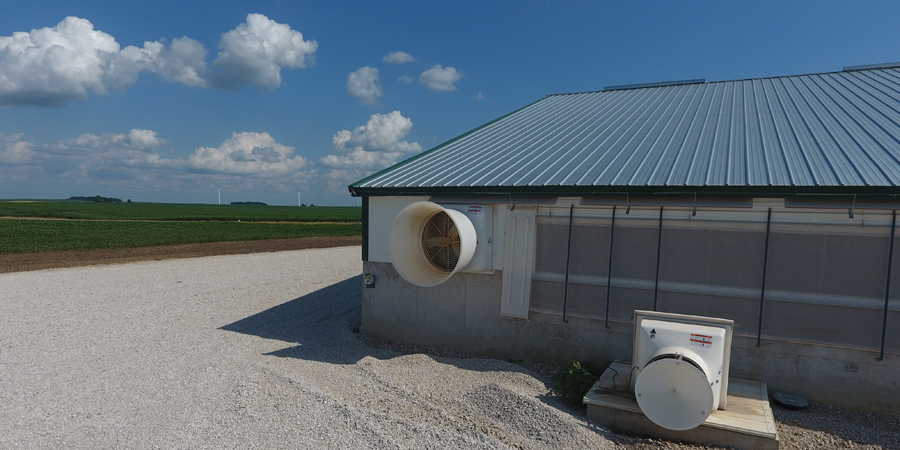
A new method of controlling variable speed fans allows using larger, higher-capacity fans to accurately deliver lower cfm needed for minimum ventilation rates.
Variable Frequency Drive or VFD system uses a three-phase single-speed motor, and VFD controller. A VFD controller receives a 0 to 10-volt signal from the house controller and sends a corresponding signal to the fan motor in frequency or hertz. The full range of a VFD fan varies from full delivery down to nearly zero. This lower cfm range permits a producer to replace several smaller minimum fans on existing facilities with a single, larger VFD fan also functioning as a tunnel fan in the summer. Varying the hertz to control fan speed has a significant advantage over using voltage including less motor overheating and improved energy efficiency because decreasing frequency also reduces power consumption.
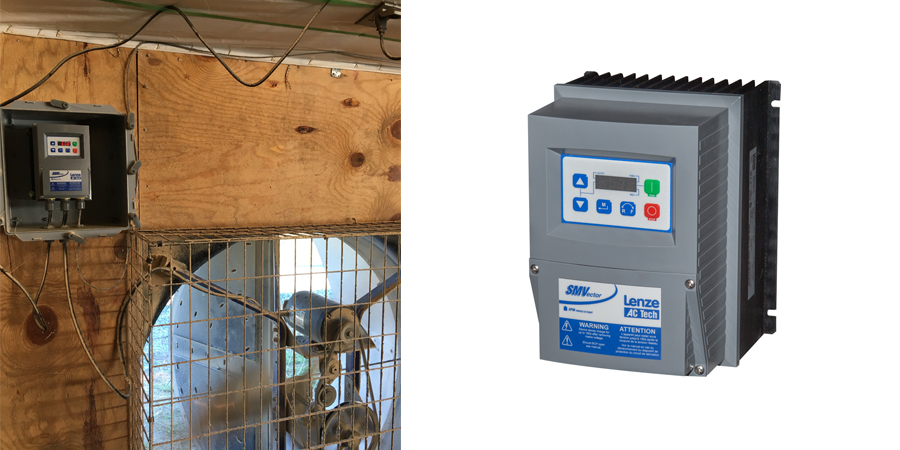
Most fans can be converted to the VFD system by swapping the motor with a three-phase motor and adding a VFD controller. Most whole house computer style controllers are capable of sending a 0 to 10-volt signal to the VFD control. Older style controllers with on-off signals can also be used with a slightly different method. The VFD controller features a manual speed control knob. The operator can set the minimum ventilation, and the ventilation control can override the VFD control and run the fan at high if the building temperature increases. As the building cools down, the control shuts off and the fan returns to the minimum rate set on the VFD control.
By Austin Baker, Ventilation Director for Hog Slat Inc. You can contact Austin at jabaker@hogslat.com
Following these four steps will help you get the best price for your production site.
1) Hire the right realtor...you aren't selling a cornfield.
While a local ag realtor might be the right choice for listing farm ground, a realtor specializing in swine production facilities will be a better option. This type of realtor will help you establish a realistic selling price for your facility by performing a comparison analysis against similar buildings. Firms regularly performing appraisals of livestock buildings will give you the most accurate evaluation.
2) Make a good first impression...and that starts with the realtor.
"The first thing a potential buyer sees is the pictures I take during the initial site visit,” says Dale Kenne, a realtor with Agri-Management Services located in Marion, Iowa, "No one expects a manicured yard and gravel borders but at least the grass should be mowed, and the trash picked up. I recently visited a finishing building that had been remodeled several years earlier and still had the old equipment laying around with weeds growing through it. It was hard to take a picture without some discarded equipment showing up in the background."
3) What about remodeling...how do you get your money back?
"We generally feel the building should be capable of functioning with its existing equipment," Dale explained. "Even if the feeders are needing replacement, and the ventilation system an upgrade it doesn't make much sense for the seller to do the remodeling. In most cases, the new owner will probably need to make those changes based on the requirements of their chosen integrator."
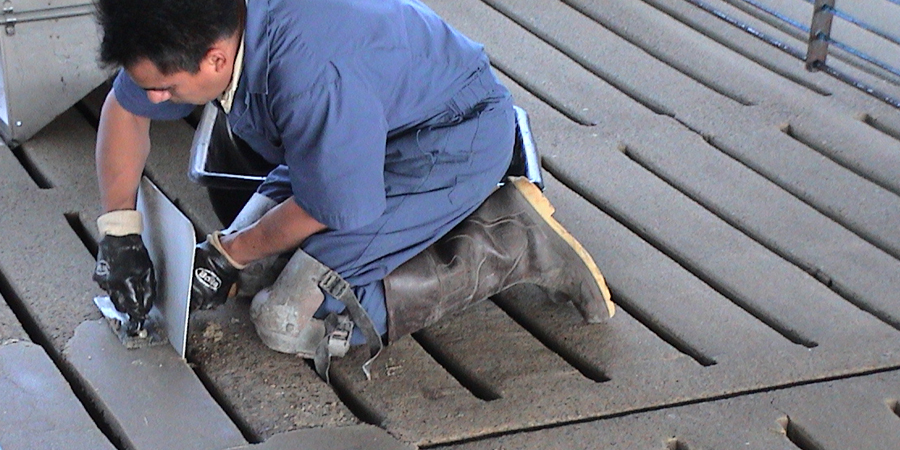
"The existing equipment doesn't have to be new, but it should be in good working order, Kenne says "Patch any badly worn slat areas around feeders, and waterers with Con-Korite™ and replace any severely damaged slats. Treat and cover any rust spots on the ceiling with a repair product like WMC-100. Tighten the legs on the penning and replace any missing gate rods and latches. Replace curtains with holes or tears, repair the curtain ropes and rehang missing curtain pockets. Doors, especially those on the exterior, should fit tight and have any missing knobs replaced."
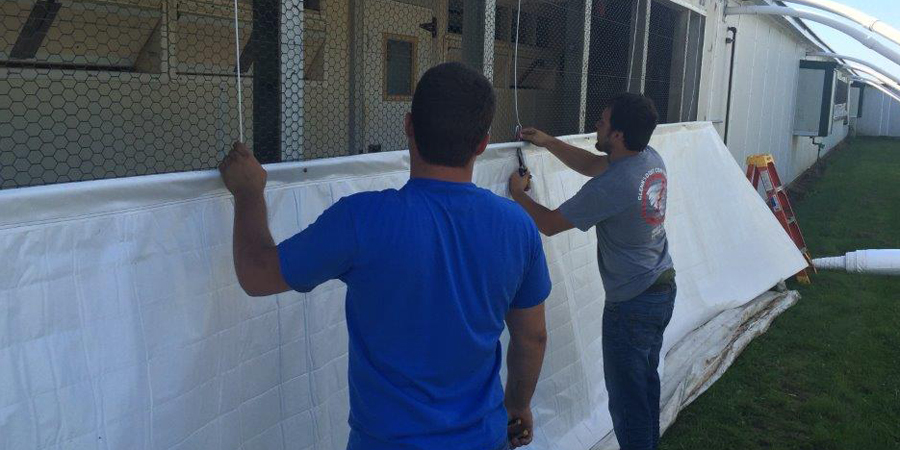
4) Little things make a difference... and they aren't expensive.
"Getting a building ready to sell usually doesn't cost a lot of money," Kenne says. "Some simple things include replacing the burned-out light bulbs, knocking the cobwebs down and washing the alleyways. You wouldn't believe the number of buildings I go in and see missing fan shutters and electric covers, ceiling inlets hanging open without counterweights, etc. In the office area, the showers and restrooms should be clean enough your mother would be OK using them!"
Dale Kenne can be contacted at dale@agri-management.com
Preliminary field test reveals similar gas levels in buildings with and without pit ventilation.
As the weather cools, regulating the environment inside livestock and poultry buildings becomes more difficult with manually operated vent doors. Adding a small ventilation fan(s) simplifies the task of maintaining a healthy environment for the animals.
Stir fans and sprinkler systems remain a cost-effective method to reduce summer heat stress for finishing pigs.
Variable Frequency Drive systems vary hertz instead of voltage to control fan speed resulting in more accurate minimum ventilation rates and better energy efficiency.
- 2024
- 2023
- 2022
- 2021
- 2020
- 2019
- 2018
- 2017
- 2016
- 2015
- 2013












 Україна
Україна Méjico
Méjico



